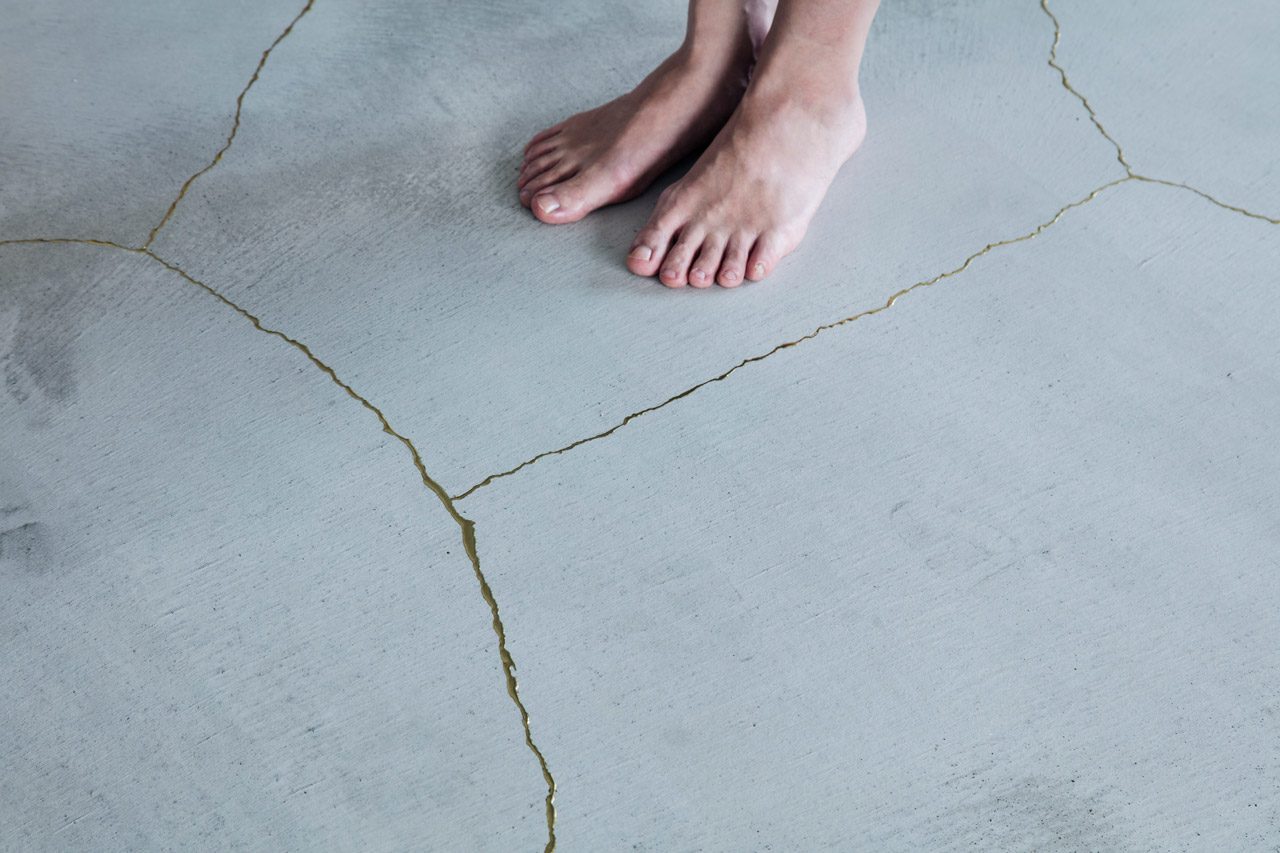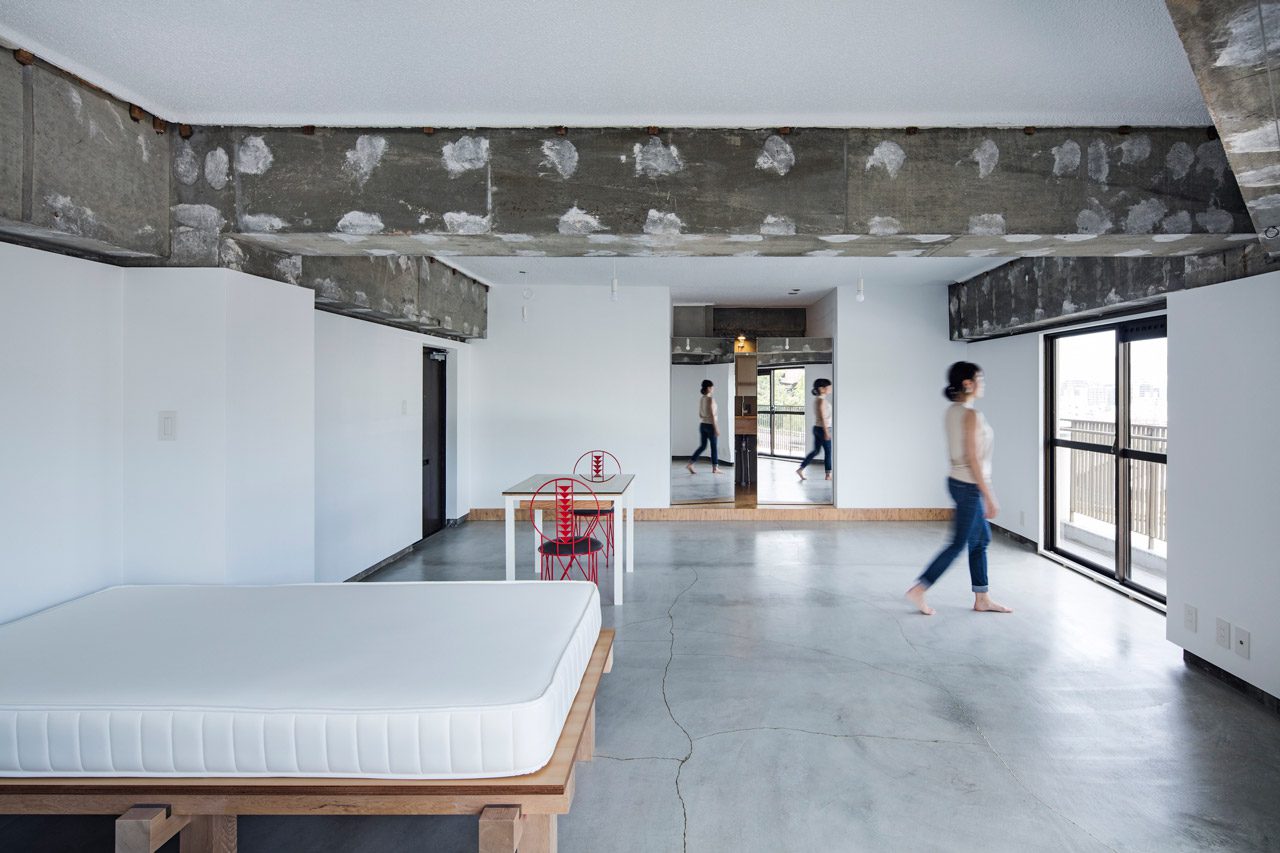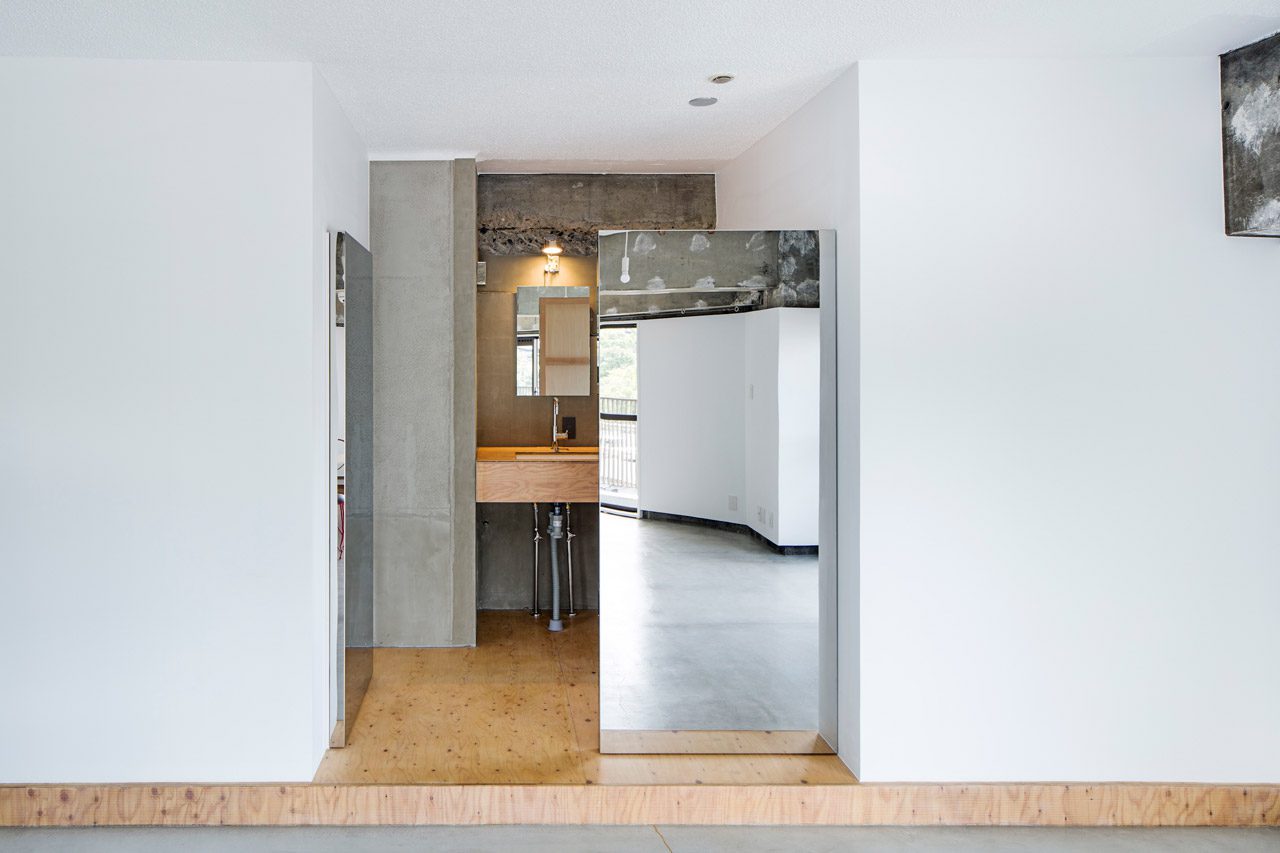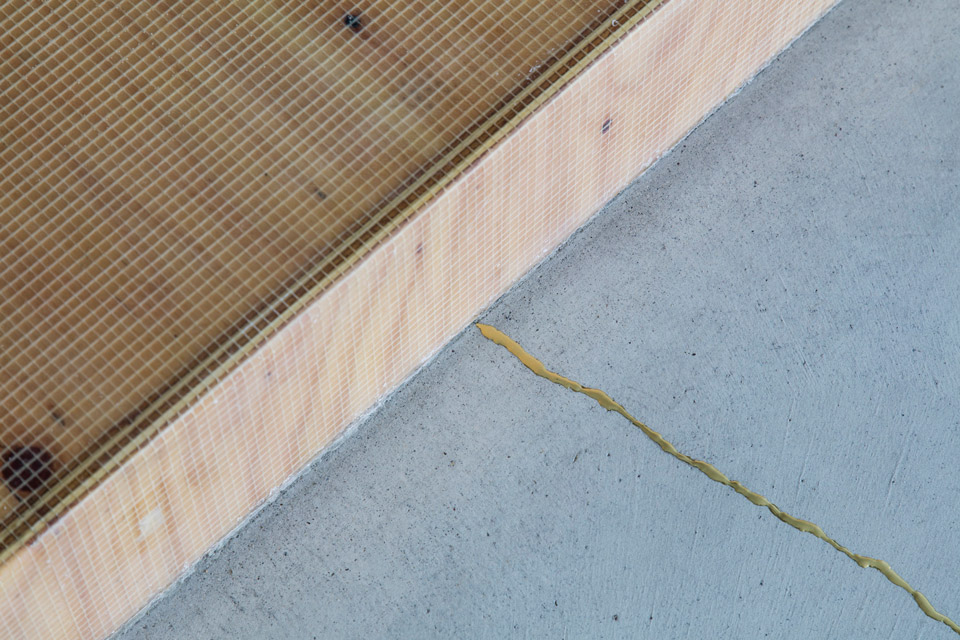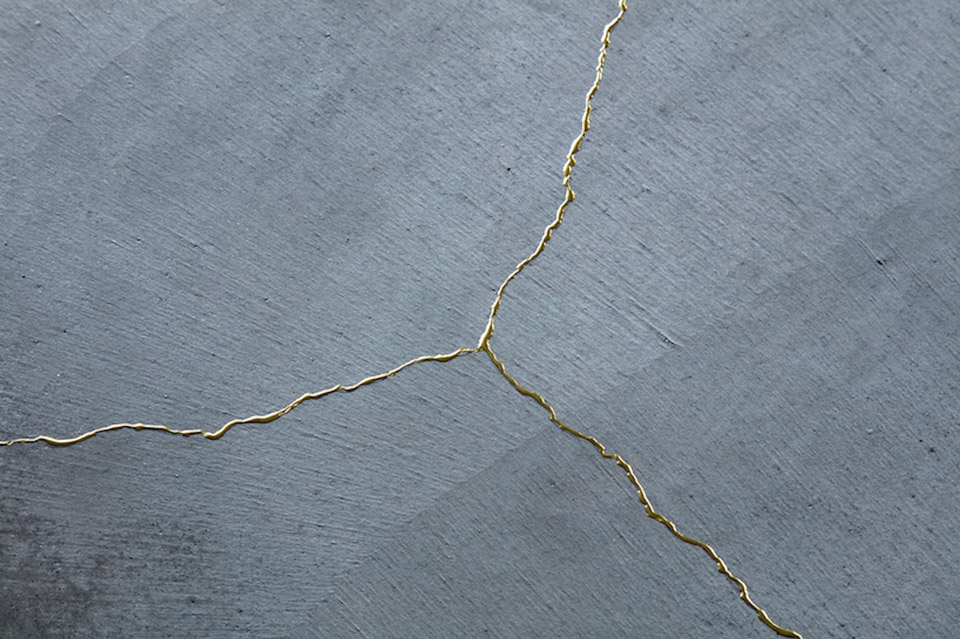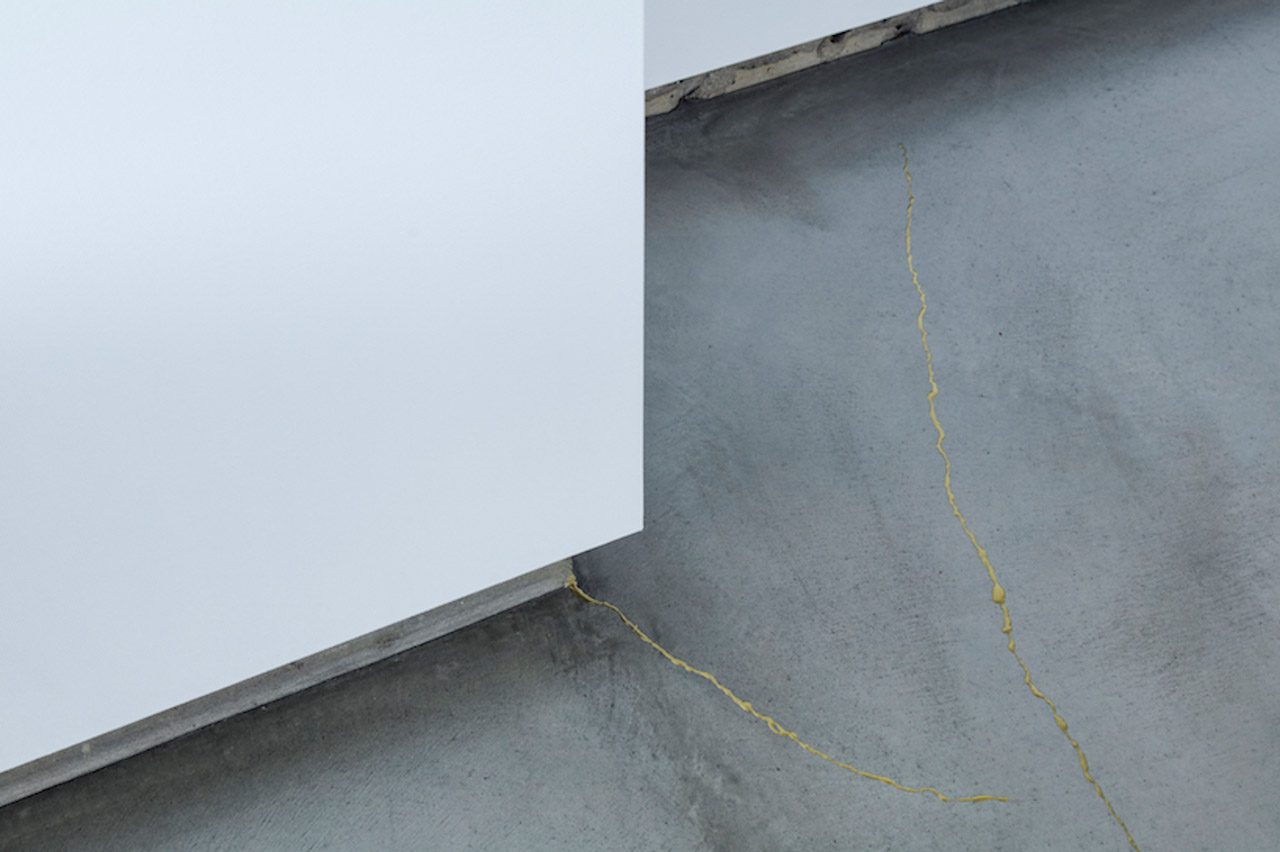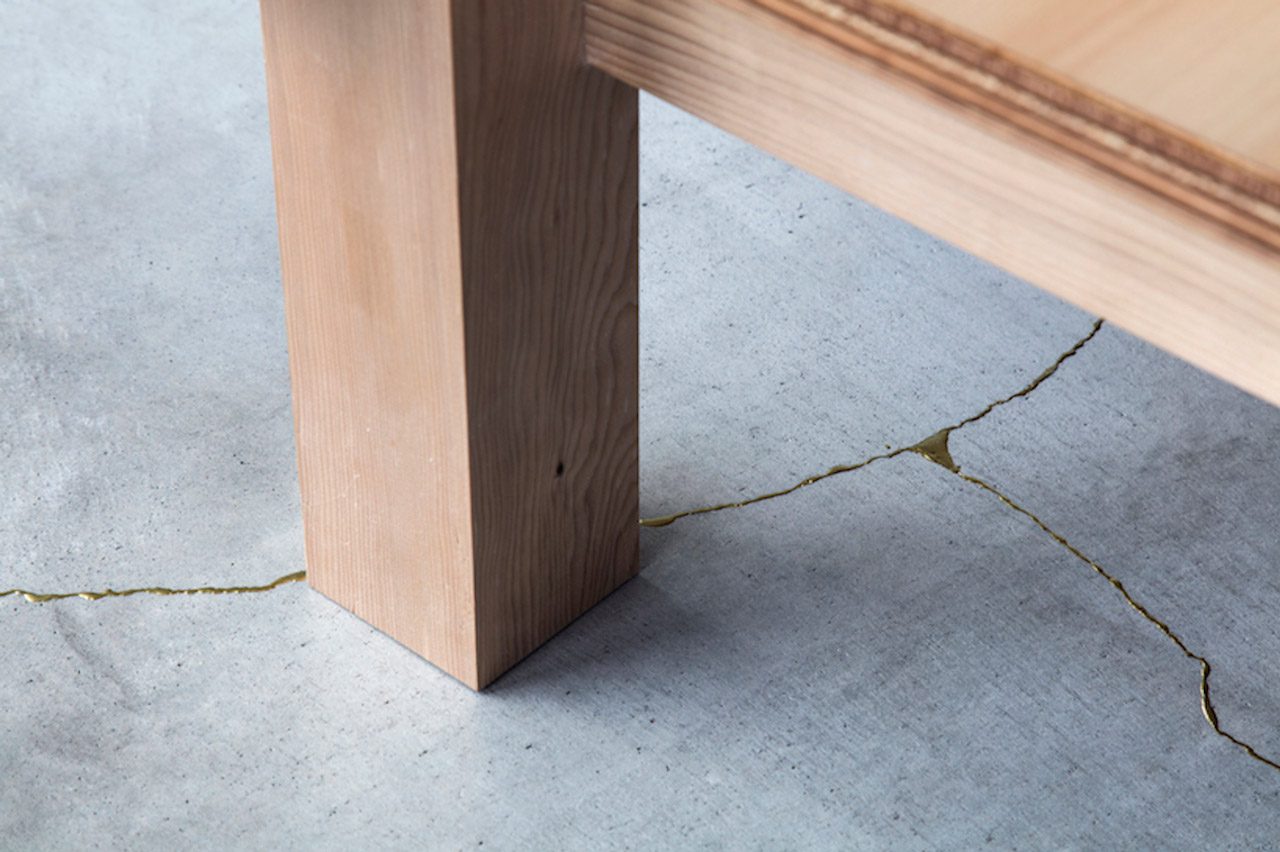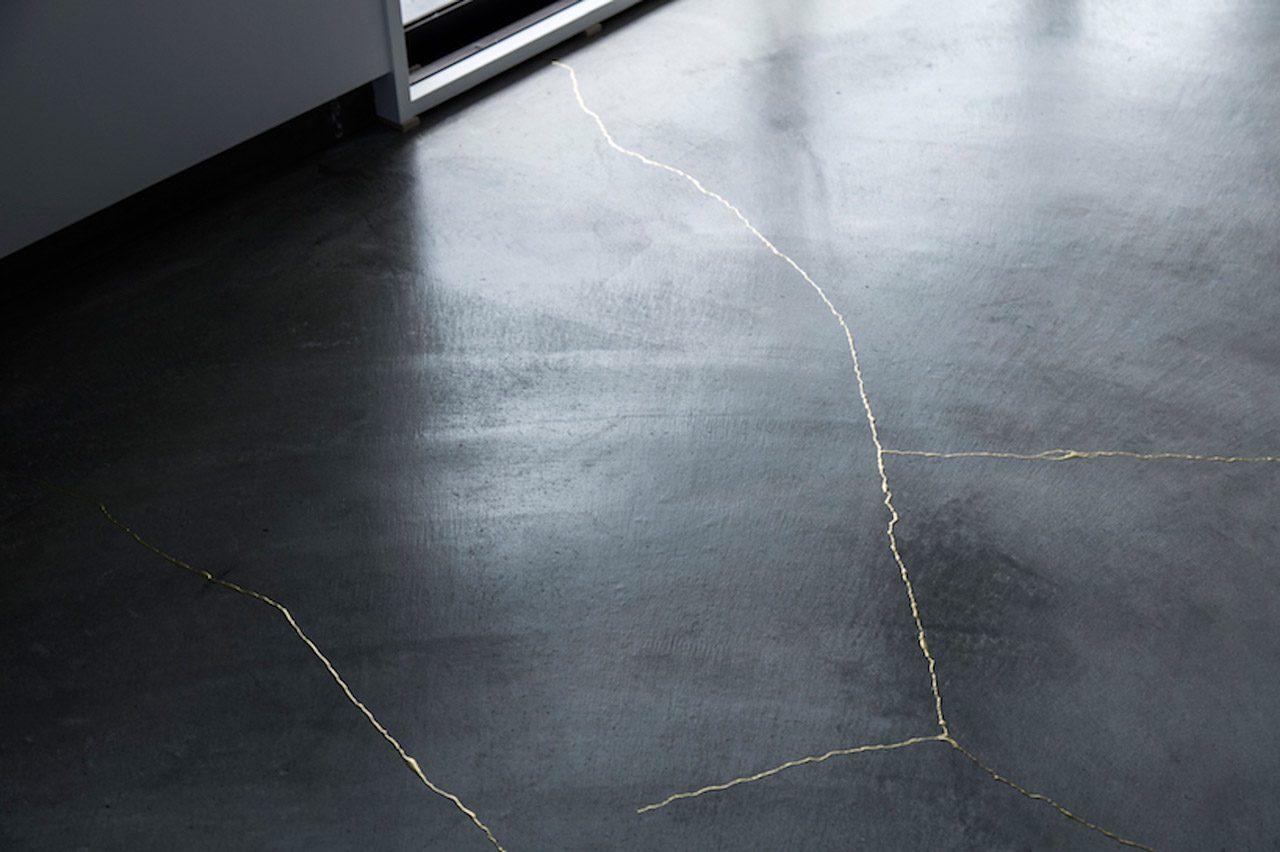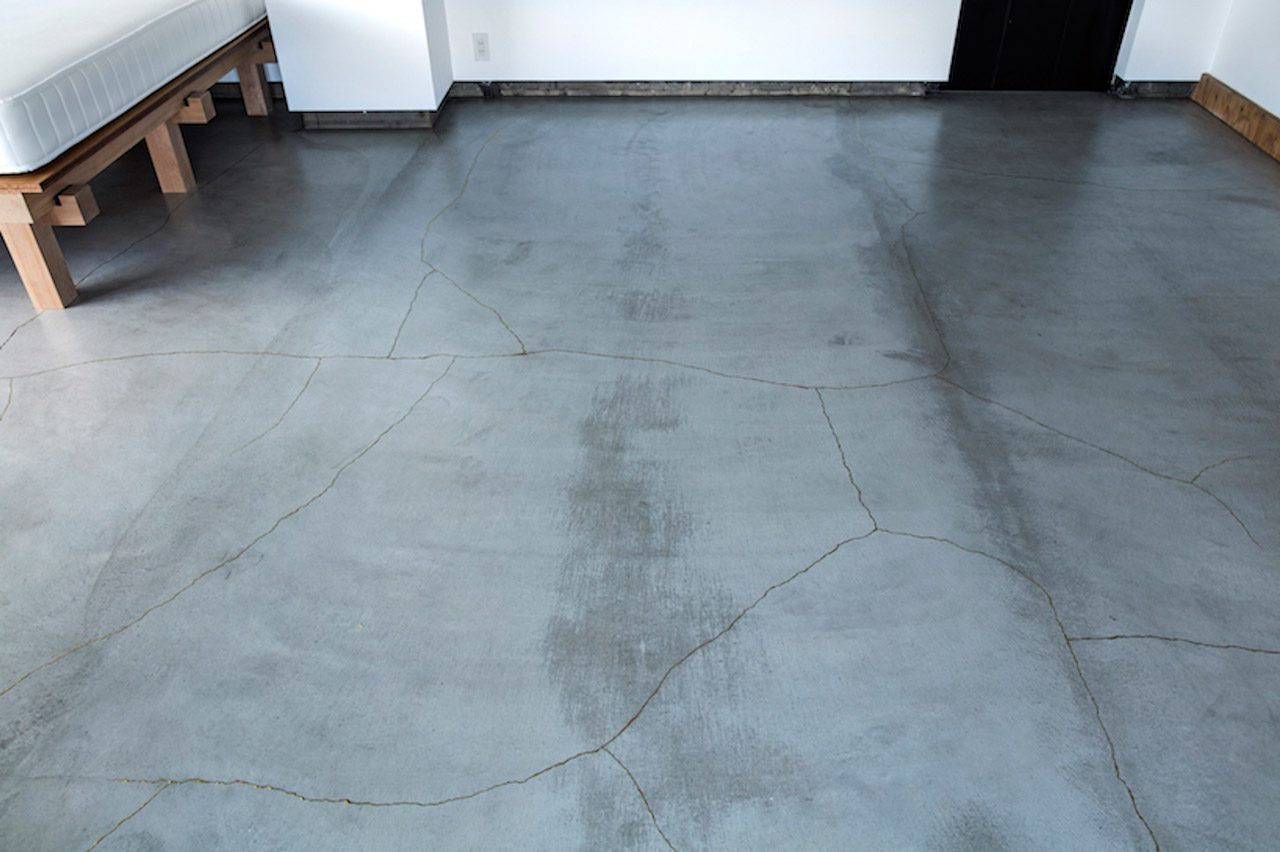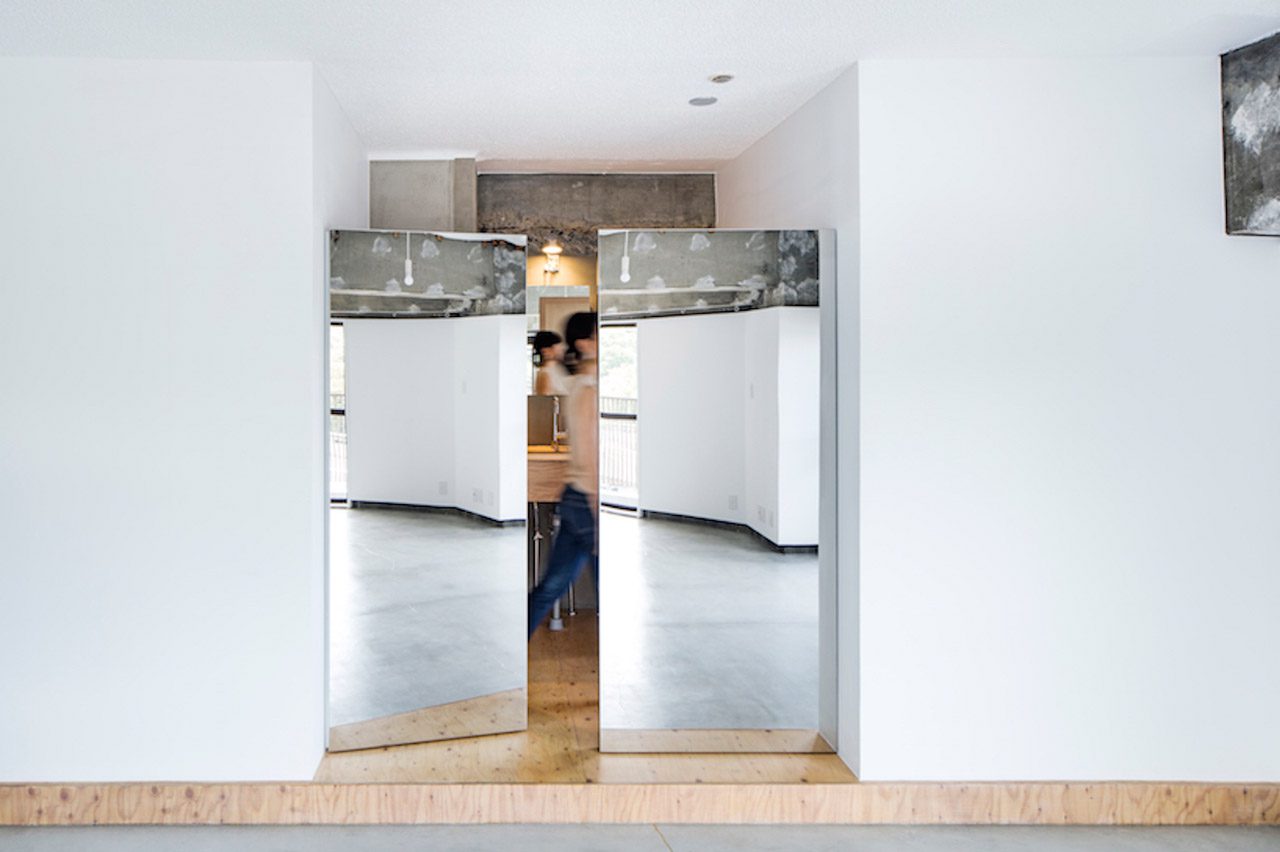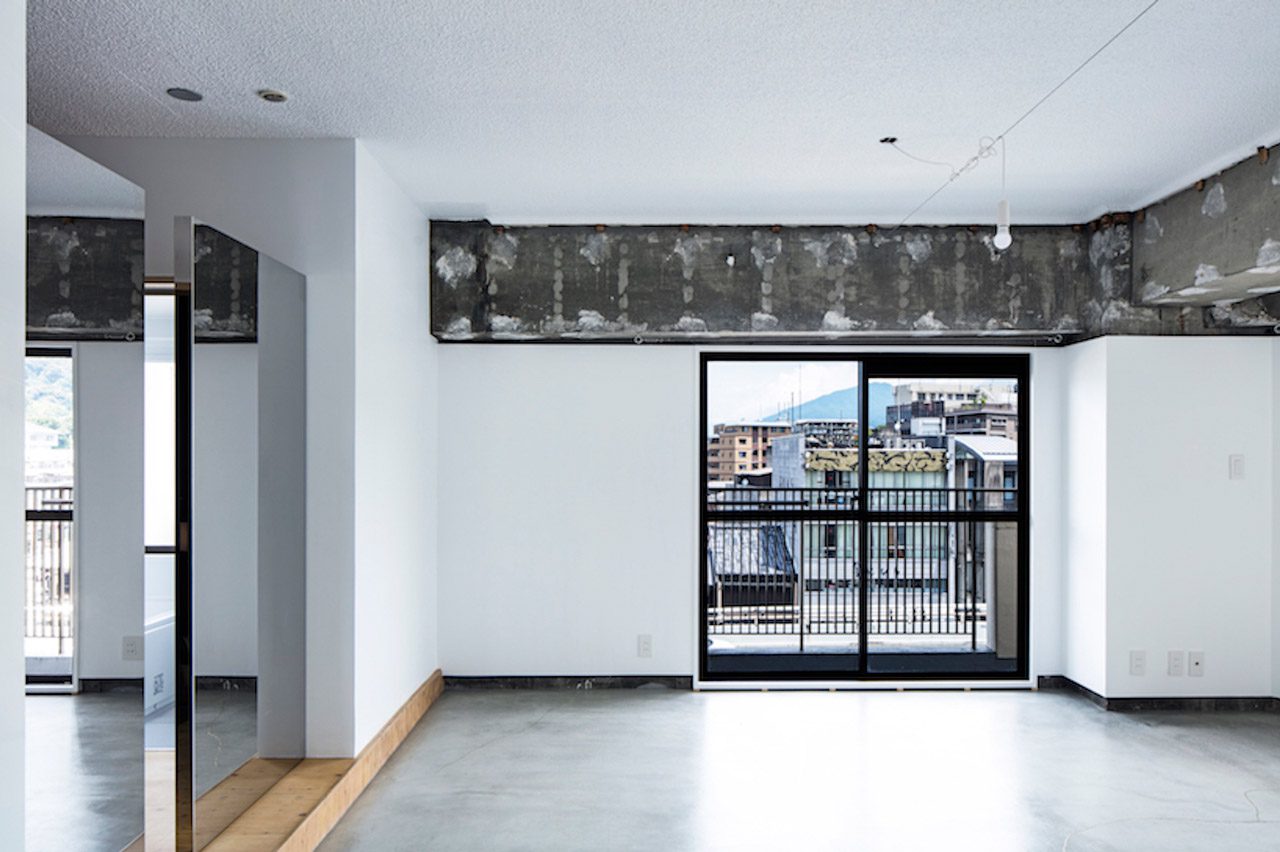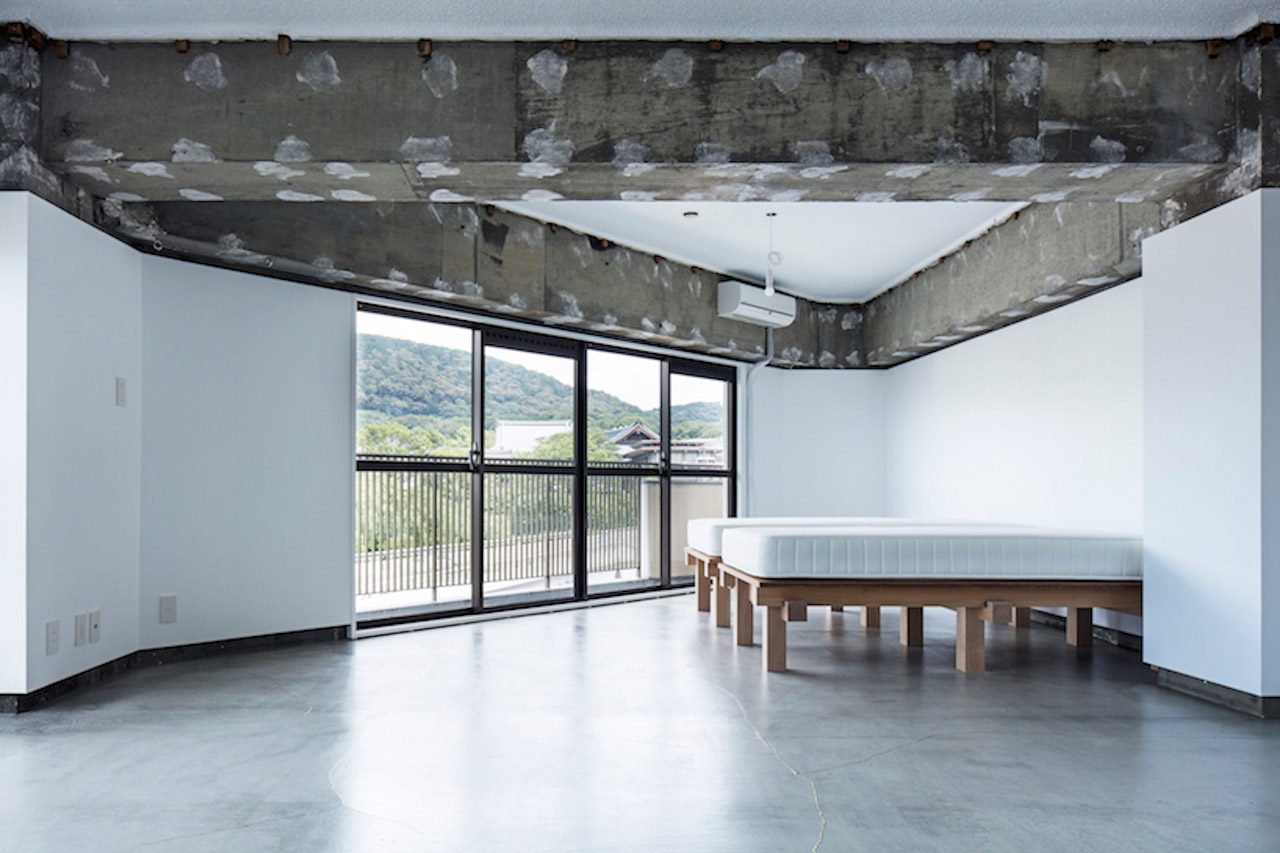сЂЊсѓїсЂ»сђЂТИЁТ░┤т»║сЂеС║гжЃйсЂ«С║ћт▒▒сѓњСИђТюЏсЂДсЂЇсѓІта┤ТЅђсЂФСйЇуй«сЂЌсЂЪсЃъсЃ│сѓисЃДсЃ│сЂ«№╝ЉСйЈТѕИсѓњсѓ▓сѓ╣сЃѕсЃЈсѓдсѓ╣ућесЂФсЃфсЃјсЃ┤сѓДсЃ╝сѓисЃДсЃ│сЂЌсЂЪсЃЌсЃГсѓИсѓДсѓ»сЃѕсЂДсЂѓсѓІсђѓ
ТЌЦТюгсЂ«тЁИтъІуџёсЂфсЃъсЃ│сѓисЃДсЃ│сЂ«СйЈТѕИсѓњсђЂТЌЦТюгтЏйтєЁсЂ«сЂ┐сЂфсѓЅсЂџТхитцќсЂІсѓЅсЂ«сѓ▓сѓ╣сЃѕсЂФсѓѓТЦйсЂЌсѓЊсЂДсѓѓсѓЅсЂѕсѓІсЃЄсѓХсѓцсЃ│сѓњуЏ«ТїЄсЂЌсЂЪсђѓ
Т┤ЌжЮбТЅђсЂ«т║ісЂ»FRPжў▓Т░┤сѓњТјАућесђѓ
Тх┤т«цсѓёсЃЎсЃЕсЃ│сЃђсЂфсЂЕжў▓Т░┤ТђДсЃ╗ТњЦТ░┤ТђДсѓњт┐ЁУдЂсЂесЂЎсѓІу«ЄТЅђсЂФсђЂСИђУѕгуџёсЂфжў▓Т░┤Тќ╣Т│ЋсЂ«СИђсЂцсЂесЂЌсЂдFRPжў▓Т░┤сЂїсЂѓсѓІсђѓ
сЂЊсЂ«FRPжў▓Т░┤сЂ»сђјТ╝єтАЌсѓісђЈсЂ«тиЦТ│ЋсЂФС╝╝сЂдсЂёсѓІсЂЊсЂесЂІсѓЅсђЂт╗║у»Ѕу┤аТЮљсЂФсѓѕсѓІТ╝єтАЌсѓітиЦТ│ЋсЂесЂЌсЂдТјАућесЂДсЂЇсЂфсЂёсЂІсЂеУђЃсЂѕсЂЪсђѓ
ухљТъюсђЂуЕ║жќЊсЂФтЇћУф┐сЂЌсЂЪУ╗йсѓёсЂІсЂфсЃєсѓ»сѓ╣сЃЂсЃБсЃ╝сЂДсЂѓсѓісЂфсЂїсѓЅсђЂтёфсѓїсЂЪт╝ит║дсЂежў▓Т░┤ТђДсЂ«сЂѓсѓІсЃЄсѓХсѓцсЃ│сЂїт«ЪуЈЙсЂЌсЂЪсђѓ
т▒Ёт«цсЂ«т║ісЂ»СИђУѕгуџёсЂфсЃбсЃФсѓ┐сЃФт║ісѓњТјАућесђѓ
сЃбсЃФсѓ┐сЃФсЂФсЂ»тЈјуИ«сЂФсѓѕсѓІсЂ▓сЂ│тЅ▓сѓїсЂїУхисЂЊсѓІуЅ╣ТђДсЂїсЂѓсѓІсђѓ
уЈЙтюесЂ«ТЮљТќЎжќІуЎ║сЂФсЂісЂёсЂдсђЂсЂ▓сЂ│тЅ▓сѓїсЂїУхисЂЊсѓісЂФсЂЈсЂёсѓѓсЂ«сЂїТхЂжђџсЂЌсЂдсЂёсѓІсЂїсђЂсЂЊсЂєсЂёсЂБсЂЪжФўТђДУЃйу┤аТЮљсЂ»ТЎѓсЂФСИђУѕгуџёсЂфтиЦТ│ЋсЂФсѓѕсѓІТѕљТъюуЅЕсѓњсђїУЅ»сЂЈсЂфсЂёсѓѓсЂ«сђЇсЂесЂЌсЂдУфЇУГўсЂЋсЂЏсЂдсЂЌсЂЙсЂєтѓЙтљЉсѓѓсЂѓсѓІсђѓ
сЂЮсЂ«сЂЪсѓЂсђЂСИђУѕгуџёсЂфсЃбсЃФсѓ┐сЃФсЂ«уЅ╣ТђДсЂДсѓѓсЂѓсѓІсЂ▓сЂ│тЅ▓сѓїсѓњсЃЮсѓИсЃєсѓБсЃќсЂФТЇЅсЂѕсѓІТќ╣Т│ЋсѓњсђЂС╗ітЏъсЂ«ТќйтиЦсЂДТЈљТАѕсЂЎсѓІУЕдсЂ┐сЂДсЂѓсѓІсђѓ
ТЌЦТюгсЂФсЂ»жБЪтЎесЂфсЂЕжЎХуБЂтЎесЂ«С┐«тЙЕсЂФсђїжЄЉуХЎсђЇсЂесЂёсЂєТЌЦТюгуІгУЄфсЂ«Тќ╣Т│ЋсЂїсЂѓсѓІсђѓсЂЊсѓїсЂ»сђїТ╝єсђЇсѓњТјЦуЮђтЅцсЂесЂЌсЂдтЅ▓сѓїсЂЪУїХубЌсЂфсЂЕсѓњуХЎсЂјсђЂуХЎсЂјуЏ«сЂФжЄЉу▓ЅсѓњУњћсЂёсЂджБЙсѓІсѓѓсЂ«сЂДсЂѓсѓІсђѓсђїтЅ▓сѓїсѓІсђЇсЂесЂёсЂєсЃЇсѓгсЃєсѓБсЃ┤сЂфУдЂу┤асѓњжђєТЅІсЂФтЈќсѓісђЂС┐«тЙЕсЂЋсѓїсЂЪтД┐сѓњсђїТЎ»УЅ▓сђЇсЂесЂЌсЂдсђїуЙјсЂЌсЂёсѓѓсЂ«сђЇсЂФУ╗бТёЈсЂЋсЂЏсђЂтЅ▓сѓїсѓІтЅЇсЂесЂ»уЋ░сЂфсѓІУХБсѓњТЦйсЂЌсѓђсЂ«сЂДсЂѓсѓІсђѓ
С╗ітЏъсЂ»сЂЊсЂ«сђїТ╝єсђЇсѓњсђїсѓесЃЮсѓГсѓиТе╣УёѓсђЇсЂФуй«сЂЇТЈЏсЂѕсђјсЃбсЃФсѓ┐сЃФт║ісЂ«жЄЉуХЎсђЈсѓњт«ЪуЈЙсЂЋсЂЏсЂЪсђѓ
Тх┤т«цсЂесЃѕсѓцсЃгсЂ«ТЅЅсЂ»жЈАжЮбтіатиЦсЂЋсѓїсЂЪжЄЉт▒ъсѓњСй┐ућесЂЌсђЂжќІсЂЉсѓІсЂеУё▒УАБТЅђсЂФсЂфсѓІС╗ЋТДўсЂДсЂѓсѓІсђѓТЅЅсѓњжќІжќЅсЂЎсѓІсЂЪсЂ│сЂФтцЅтїќсЂЌсЂдтєЎсѓіУЙ╝сѓђТЎ»УЅ▓сЂїтЁЦсѓїтГљсЂФсЂфсѓісђЂжбеТЎ»сЂ«жї»УдџсѓѓТЦйсЂЌсѓЂсѓІсђѓ
сЂЊсѓїсѓЅсЂ«УдЂу┤асЂДТДІТѕљсЂЋсѓїсЂЪуЕ║жќЊсЂ»СИђУдІсЂесЂдсѓѓсѓисЃ│сЃЌсЃФсЂфсЂїсѓЅсѓѓсђЂсѓцсЃгсѓ«сЃЦсЃЕсЃ╝сЂЋсЂФт»їсЂ┐сђЂУдІсѓІсЂЪсЂ│Тќ░сЂЌсЂёуЎ║УдІсѓњС┐ЃсЂЌсЂдсЂЈсѓїсѓІсѓѓсЂ«сЂФсЂфсЂБсЂЪсђѓ
The apartment is located nearby Kiyomizu-Temple, and has excellent views of the five sacred mountains of Kyoto.
Our plan was to transform a typical (drab) Japanese condominium into a guesthouse where artists and creators can pursue their creative activities and enjoy living as well.
We also tried to integrate traditional Japanese techniques normally not used in construction into the design.
[Highlights]
In traditional Japanese lacquerware РђюUrushi-Nuri,РђЮ the technique calls for lacquer resin-impregnated jute fabric reinforcement of the wooden base, forming a rigid composite structure beneath the polished upper coat.
This composite technique resembles FRP (Fiber Reinforced Plastic) layering, so we chose FRP using translucent resin for the washroom floor to mimic this method. The translucent resin is polished to reveal the underlying glass-fiber layers over the wooden base, resulting in a translucent yet complex visual texture while achieving material strength and waterproofing needed for the location.
The Japanese have traditionally repaired broken ceramics by gluing fragments with Japanese lacquer and gilding the seams with gold powder to enjoy the beauty of imperfection as РђюKintsugi,РђЮ literally meaning Рђюto join with gold.РђЮ In construction, traditional plastered mortar cracks when it sets. This cracking is usually deemed inferior work; currently, improved mortar seldom cracks. We noticed that this cracking resembles broken ceramics. Using a traditional mortar, we emulated the art of РђюKintsugiРђЮ in the living room by joining the cracks with gold coloured epoxy-resin, thus transforming what was considered imperfect into a subject of beauty.
The mirrored bathroom doors double as a changing room when opened. The highly polished metal surfaces reflect the room’s interior and surrounding scenery producing a kaleidoscopic effect.
At a glance, each element may be simple, but as a whole serves an intuitive and creative atmosphere for the creative resident.
Architect_TANK (Naritake Fukumoto)
Construction_LO├ќWE,TANK
Photography_Kenta Hasegawa
Location_Kyoto, Japan
2016.07
